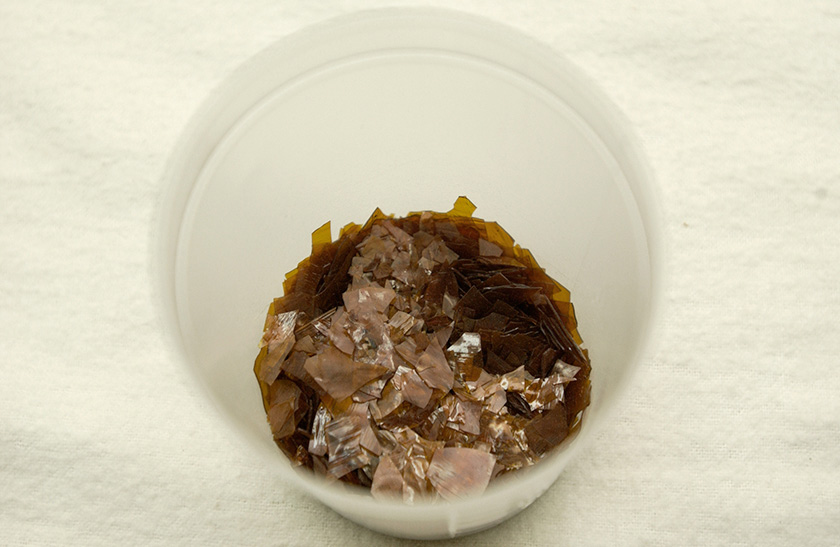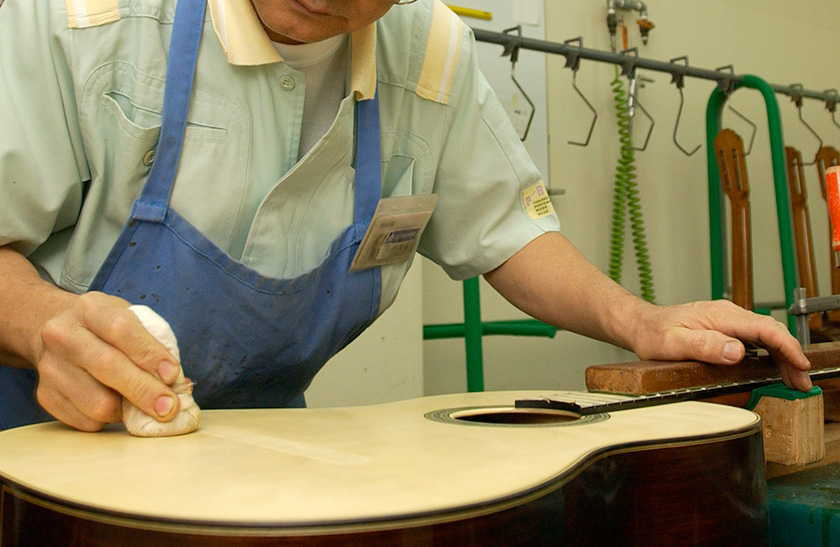How the Classical Guitar is Made
A traditional full coating of shellac
Painting guitars with resins secreted by bugs?
Varnishing the top of the guitar is an essential point for producing great quality guitars.
Above all, the major purpose of varnish is to give the guitar a superb looking finish. Coatings that discolor or crack over time cannot be used, and neither can resins that become sticky at higher temperatures, as they can adversely affect the guitarist's performance. The varnish also affects sound quality, so much so that some say the varnish itself can completely change the timbre of the guitar.
Shellac resin is the most common type of varnish used to fulfill this important role for guitars. It is a renowned for its outstanding gloss and superior durability, and it can even improve sound quality. Shellac is actually the processed form of resin secreted by insects called lac bugs found on trees in Thailand and India. Research has been conducted into the manufacture of artificial varnish with the same chemical properties, but at this stage, there is no varnish that exceeds the qualities of shellac resin.
Some people may be concerned about the fact that the resin is secreted by a bug, but there is no need for such concern. The resin is quite safe, and is even used as a coating for confectionery and candy. The lac bug ranks alongside the silkworm and honeybee as the three most useful insects to humankind, and they live in large numbers in India and South East Asia.
It takes expert knowledge to properly apply shellac, to know how many coats to give, and to know how long to let it dry. It is indeed the best natural coating for guitars.

The brown substance is shellac
Over 200 repeated coatings
Shellac itself is a solid substance that is dissolved in ethanol and soaked in a muneca before being applied to the guitar. The first coat should be applied to fill in the fine pores of the wood surface. Further coats are then applied to add thickness and luster.
In general, over 200 coats are required. This number needs to be adjusted to suit the condition of the wood or the particular season. The entire body of the guitar needs to be coated with shellac, dried, sanded back and coated again. The whole process takes almost three months. With each additional coating, the color of the shellac will become evident, and the guitar will take on a darker tinge.

Soaking a muneca with shellac
A thick coating can adversely affect the sound of the guitar, so a thin coating is recommended. When using shellac, the thickness should be between 20 and 30 microns. Spray varnish requires 150 to 300 microns to achieve the same finish, so shellac produces a much thinner coating.

A guitar before the application of shellac on the right, and a guitar with glossy coating being held up on the left
